BRITISH COLUMBIA


ORIGIN OF PROVINCE NAME: The name signified the British territorial domain over its Crown colony. Columbia Lake, the Columbia River, and the province were named in honor of Christopher Columbus.
CAPITAL: Victoria.
NICKNAME: The Pacific Province.
ENTERED CONFEDERATION: 20 July 1871.
MOTTO: Splendor sine occasu (Splendor without diminishment).
COAT OF ARMS: In the center, the provincial shield of arms displays the Union Jack (the flag of the United Kingdom) in the upper half with an antique gold crown in the center; the lower half of the shield has a golden sun setting over alternating blue and white wavy lines (see "Flag" below for symbolism). Above the shield, standing on a royal crown, is a lion with Pacific dogwood garlanded around its neck. Supporting the shield are an elk on the left and a bighorn sheep on the right. Beneath the shield the provincial motto appears on a scroll entwined with Pacific dogwood flowers.
FLAG: The Union Jack is in the upper third of the flag, symbolizing the province's origins as a British colony. In the lower two-thirds is a golden sun setting over alternating blue and white waves representing the Pacific Ocean.
FLORAL EMBLEM: Pacific dogwood.
TARTAN: Blue, green, white, and gold on a red background.
PROVINCIAL BIRD: Steller's jay.
TREE: Western red cedar.
MINERAL: Jade.
TIME: 5 AM MST = noon GMT; 4 AM PST = noon GMT.
1 LOCATION AND SIZE
British Columbia, Canada's westernmost province, is bordered on the north by the Yukon Territory and the Northwest Territories; on the east by Alberta; on the south by the US states of Montana, Idaho, and Washington; and on the west by the Pacific Ocean and the US state of Alaska. Its area of 367,669 square miles (952,263 square kilometers) makes British Columbia Canada's third-largest province (occupying almost ten percent of the total national land surface). The province is nearly four times the size of Great Britain, two and one-half times larger than Japan, larger than every US state except Alaska, and bigger than all but 30 nations in the world.
Given its location, British Columbia is a gateway to the Pacific and Asia. Often categorized as part of Canada's "West," the province is actually a distinct region both geographically and culturally.
2 TOPOGRAPHY
British Columbia is one of North America's most mountainous regions, offering remarkable topographical contrasts. Where the Pacific Ocean reaches the continent, there are a chain of islands, large and small, running from north to south. Some of these islands are nestled in fjords (narrow water passages with steep shores on either side) carved in the majestic Coastal Mountains, which rise more than 6,500 feet (2,000 meters) above sea level.
To the east of the Coastal Mountains lies a rolling upland of forests, natural grasslands, and lakes. Further east, the Rocky Mountains—with peaks more than 13,000 feet (4,000 meters) high—separate British Columbia from neighboring Alberta. In the northeast, a small corner of the province is an area of plains.
British Columbia Population Profile
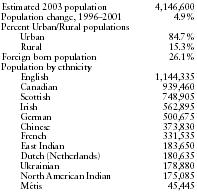
| Estimated 2003 population | 4,146,600 |
| Population change, 1996–2001 | 4.9% |
| Percent Urban/Rural populations | |
| Urban | 84.7% |
| Rural | 15.3% |
| Foreign born population | 26.1% |
| Population by ethnicity | |
| English | 1,144,335 |
| Canadian | 939,460 |
| Scottish | 748,905 |
| Irish | 562,895 |
| German | 500,675 |
| Chinese | 373,830 |
| French | 331,535 |
| East Indian | 183,650 |
| Dutch (Netherlands) | 180,635 |
| Ukrainian | 178,880 |
| North American Indian | 175,085 |
| Métis | 45,445 |
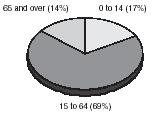
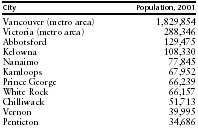
| City | Population, 2001 |
| Vancouver (metro area) | 1,829,854 |
| Victoria (metro area) | 288,346 |
| Abbotsford | 129,475 |
| Kelowna | 108,330 |
| Nanaimo | 77,845 |
| Kamloops | 67,952 |
| Prince George | 66,239 |
| White Rock | 66,157 |
| Chilliwack | 51,713 |
| Vernon | 39,995 |
| Penticton | 34,686 |
3 CLIMATE
The province's climate is as diverse as its topography. For example, the mild coastal region receives abundant precipitation—from 51 to 150 inches (130 to 380 centimeters) of rain a year—while the interior has a continental climate featuring long, cold winters and mild to hot summers. Other parts of the province are almost desert-like, with very hot summers followed by very cold winters. The highest temperature recorded in British Columbia was 112° F (44.4° C ) on 16 July 1941 at Lillooet; the lowest was -74° F (-58.9° C ) on 31 January 1947 at Smith River. Overall, Victoria is ranked as having the mildest climate
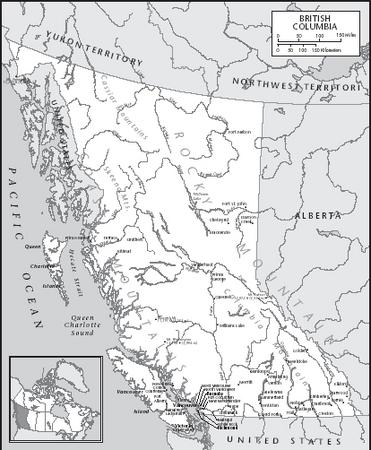
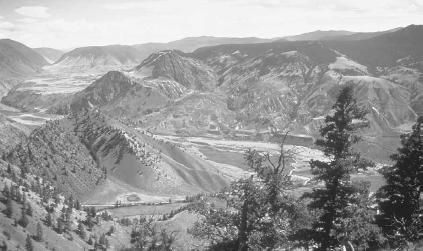
4 PLANTS AND ANIMALS
British Columbia is home to some 280 mammal species, 500 bird species, 450 fish, 21 amphibians, and 17 reptile species. Invertebrate species are estimated at between 50,000 and 70,000, including 35,000 species of insects. There are an estimated 2,580 species of vascular plants (ferns and all plants that reproduce through seeds), 1,000 types of mosses and liverworts, 1,000 lichens, 522 species of attached algae, and more than 10,000 fungi species.
Some of the more distinguishable mammal species are: shrew, mole, bat, rabbit, pika, beaver, vole, lemming, mouse, porcupine, gopher, squirrel, chipmunk, coyote, wolf, fox, cougar, lynx, bobcat, otter, sea lion, wolverine, marten, fisher, skunk, ermine, weasel, raccoon, black bear, grizzly bear, mountain goat, bighorn sheep, moose, deer, elk, and caribou.
5 ENVIRONMENTAL PROTECTION
Prior to 2001, the Environmental Protection Division of the British Columbia Ministry of Environment, Lands and Parks (BCE) was responsible for protecting the environment by regulating waste discharges and controlling the impact of polluting substances. In 2001, the BCE was divided into the Ministry of Sustainable Resource Management, and the Ministry of Water, Land, and Air Protection. The Ministry of Sustainable Resource Management promotes sustainable development of land and water resources; delivers science-based land, resource, and geographic information; and provides corporate leadership to land and water resource policy, planning, and integration. The Ministry of Water, Land, and Air Protection protects water, land, and air quality, including climate change and environmental emergencies; has stewardship over biodiversity, including wildlife, fish, and protected areas; is responsible for park and wildlife recreation management, including hunting, angling, park recreation, and wildlife viewing; and is responsible for environmental monitoring and enforcement.
Aside from concerns over global greenhouse gas emissions and ozone depletion, local air quality problems include: smog in the Lower Fraser Valley (which includes the Vancouver metro area); acid deposits in soils from acid rain, mainly in southwest British Columbia; industrial pollution; and smoke from forestry activities, open burning, and domestic wood stoves. In 1991/92, Canada's first vehicle emission testing program, AirCare, began in the Lower Fraser Valley.
Pulp mills and mining activities, which discharge chemical waste, are contributors to soil pollution in the province, which has the strictest regulations in Canada on the discharge of chlorinated organic compounds. Local recycling programs play an important role in this goal—besides traditional residential waste recycling programs, British Columbia also has regulations or programs to recycle used lubricating oil, waste gypsum wallboard, and used tires and lead acid batteries.
Water management policy issues include water export and the impact of industry on rivers and streams. Recent concerns over nitrate and pesticide contamination of aquifers (naturally occurring underground reservoirs of water) from agricultural activities have resulted in several experimental projects aimed at sustaining water quality without hurting the agricultural industry.
6 POPULATION
For 2003, the population of British Columbia was more than 4 million residents, or about 13 percent of the national population. British Columbia has one of the highest median ages in the nation. In 2001, the median age was 38.4. This was just below the nation's highest median age of 38.8, in both Nova Scotia and Québec. Seniors over the age of 65 made up 14 percent of the population.
Fifty-four percent of all British Columbians live in the Victoria and Vancouver areas. In 2003, Vancouver was home to 1.8 million people, making it the third-largest Canadian city. Victoria had over 288,000 inhabitants that year, and ranked thirteenth nationwide.
7 ETHNIC GROUPS
The majority of British Columbia's inhabitants are of British origin, but the population is enriched by immigrants and descendants of immigrants of all nationalities. In 2003, there were approximately 373,830 British Columbians (9.7 percent) with Chinese origins, many of whom are descendants of the thousands of Chinese who took part in the construction of the Canadian Pacific Railway in the late nineteenth century. The Japanese began to arrive in the 1890s, becoming merchants and fishermen. Today, Vancouver has North America's second-largest Chinese community (after San Francisco). More than 183,000 residents have their origins in India or southern Asia, over 69,000 are Filipino, and over 37,000 have Japanese origins.
The Aboriginal population (Native Peoples) of British Columbia began to decline with the arrival of the first European settlers. Aboriginal Peoples numbered 175,085 in 2001 (4.5 percent), and there were 45,445 Métis (people of mixed Aboriginal and European descent).
8 LANGUAGES
English was the native tongue of 73 percent of British Columbia residents in 2001. French speakers made up 1.4 percent of the population, while 24.4 percent of the people had some other first language, chiefly Chinese and Punjabi. The remaining 1.2 percent had two or more native languages.
9 RELIGIONS
Over 31 percent of British Columbia's population, or about 1,213,295 people, are Protestant, including United Church of Canada members, Anglicans, Lutherans, Baptists, Pentecostals, and Presbyterians. British Columbia also has about 675,320 Catholics, 35,655 people of Eastern Orthodox faith, 135,310 Sikhs, 85,540 Buddhists, 56,220 Muslims, 31,500 Hindus, and 21,230 Jews. Approximately 1.4 million British Columbians report no religious affiliation.
10 TRANSPORTATION
British Columbia has some 4,225 miles (6,800 kilometers) of mainland railway track operated by BC Rail, Canadian National (CN) Rail, Canadian Pacific (CP) Rail, and other railways. CP Rail provides railcar barge service to Vancouver Island, and CN Rail operates the Aquatrain service from Prince Rupert to Alaska.
Highways in British Columbia provide all-weather service to most of the province. In 2000, there were 14,733 miles (23,710 kilometers) of paved road, 11,639 miles (18,730 kilometers) of unpaved road, 2,727 bridges, and 136 tunnels and snowsheds (shelters against snowslides). In 2003, British Columbia had some 2.42 million licensed passenger cars, 8,300 buses, 31,958 motorcycles and mopeds, and 271,041 trailers.
Vancouver has the largest dry cargo port on the Pacific Coast of North America. Prince Rupert is another major port. Other year-round deepwater ports are located at New Westminster, Nanaimo, Port Alberni, Campbell River, and Powell River.
Ferry service is extensive, with the British Columbia Ferry Corporation using 40 vessels on 26 routes between the lower mainland, Vancouver Island, and other coastal points. In 1999/2000, provincial ferries carried 21.4 million passengers and 7.9 million vehicles. Cruise ship passengers numbered 948,000 in 1999.
Urban transit consists of over 1,000 buses and over 100 light-rail vehicles.
Air service is provided through a network of airports, floatplane (planes that take off from and land on water) facilities, and heliports. In 2000, Vancouver International Airport served 16 million passengers, including more than 3.63 million international passengers.
11 HISTORY
The Aboriginal Peoples, native peoples of British Columbia, developed one of the richest and most complex American cultures north of Mexico. Because of the diversity of northern North America's Pacific coast—mild to cold climate, seashore to mountains—the tribes that settled in this area developed completely different cultures and languages. Aside from being expert whalers and wood sculptors, the coastal inhabitants were famous for holding potlatches —ceremonies in which important gifts were given to guests.
Spain and Britain Clash Over the Land
In 1774, Spanish explorers visited the coast of what is now British Columbia. Although they did not land or send settlers to the region, Spain did claim the area as its own. Four years later, in 1778, Captain James Cook of Great Britain became the first person to survey the region. He was looking for the Northwest Passage, a route through the Americas that would make travel from Europe to Asia faster. British merchants followed, establishing a fur trade with the region's native people. Spain was initially unwilling to give up its claim to the territory. The two countries almost went to war over claims to land around the Nootka Sound, but the controversy ended when Spain and Britain were granted equal trading rights. The issue of ownership was not really clarified, however, until the British set about mapping the area, thereby strengthening their claim to the region. George Vancouver was the first European to map the coastline during a three-year trip (1792–1795) that took him from Oregon to Alaska. He was followed by Scottish-born explorer Alexander Mackenzie, a North West Company fur trader who explored the interior of British Columbia in 1793.
An Isolated Portion of Canada
Apart from the fur trading posts established by Canadian traders Simon Fraser and David Thompson, no other settlements arose in British Columbia in the early 1800s. In fact, the first permanent colony, located in present-day Victoria, was not established by the British until 1843. When gold was discovered in the lower Fraser Valley in 1857, thousands of people came in search of instant wealth. To help maintain law and order, the British government established the colony of British Columbia the following year. Then, when the frenzy of the gold rush was over in 1866, the colony of Vancouver Island joined British Columbia. The colony was cut off from the rest of British North America by thousands of kilometers of water, land, and the Coast Mountains.
The promise of a rail link between the Pacific coast and the rest of Canada convinced British Columbia to join the Canadian Confederation in 1871. Construction of the railroad did not start until 10 years later. It took 5 years and thousands of men (including many Chinese immigrants) to complete the track. Vancouver was situated at the west end of the line, and as the railway brought people to its port, the city's population began to grow. By 1901, Vancouver had nearly 27,010 residents.
The population of the rest of the province was also rising as more and more settlers arrived to take advantage of the opportunities that British Columbia's natural resources provided. The discovery of gold in the Kootenay region brought prospectors from the United States, and mining camps soon sprang up in the surrounding territory. Settlers were also drawn to the coast, where the province's fishing industry was centered. Sawmills popped up along the shores of Vancouver Island and the Strait of Georgia, and in 1912 the first pulp and paper mill was established in Powell River.
Depression and War
Canada lost over 68,000 soldiers in World War I (1914–1918), and veterans returning to British Columbia faced a bleak future of scarce, low-paying jobs. At the same time, tariffs (taxes) on imports kept prices for consumer goods high. Overall, Canada experienced a period of rapid industrialization in the 1920s, and forestry and mining in British Columbia became prominent industries. However, the fishing industry was suffering, and the factories that had been prosperous during wartime were closed down.
Just as in the United States, the entire Canadian economy was devastated by the Great Depression, a period of severe economic downturn that began in 1929. The effects of the Depression on Canada were compounded by droughts and frequent crop failures—bad news for a region that still heavily relied on agriculture. Social welfare programs expanded rapidly during the 1930s, with much of the monetary burden being placed on the local governments. In Vancouver, an estimated 8,000 families were on welfare and about 28% of workers were unemployed. The homeless flocked to British Columbia from other parts of the country because of its temperate climate, so there was an even greater demand for food and money there. The situation became desperate, and large protests were staged by the unemployed in Vancouver.
World War II (1939–1945) brought with it an end to the Depression, but a new social problem arose: discrimination against Japanese immigrants in British Columbia. The Japanese attack on Pearl Harbor in December 1941 led to the rounding up of Canada's Japanese fishermen and the seizure of their boats. By early 1942, almost 21,000 Japanese-Canadians were homeless. Some were forced to work on farms in Alberta and Manitoba or on highways in the British Columbia interior; some families were sent to camps in southeastern British Columbia; others
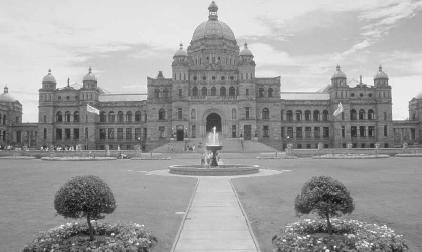
On the economic front, the years after World War II were prosperous ones. William Bennett became premier of British Columbia in 1952. Under his leadership, highways, bridges, and pipelines were built, and jobs became more plentiful. Bennett's son, Bill, later won election as premier and served from 1975 to 1986. During this time, BC Place Stadium was built, Expo 86—a world's fair that attracted 19 million visitors—was launched, and government spending was limited.
The Québec Question
Since 1986, the province of British Columbia has seen its share of controversy. Environmentalists and industry have clashed over the development of resource industries, and native people have argued with the government over land claims. British Columbia has also had a somewhat tense relationship with the rest of Canada.
Canada's unity has been threatened by the possibility of Québec's secession, or separation, from the rest of the country. Québec is a French-speaking area that places high value on the preservation of its French culture. The Meech Lake Accord (1987) and the Charlottetown Accord (1992) both proposed the recognition of Québec as a "distinct society" within the nation. The Canadian government had hoped that these accords would alleviate Québec's fears of cultural loss and discrimination while maintaining a unified Canada. Québec's separation issue remains unresolved. In British Columbia, 67% of residents—the highest rate in Canada—rejected the accord because they felt that Québec would be receiving preferential treatment under the conditions outlined in the pact.
The Future
In 2001, Gordon Campbell led the Liberal Party to a huge election victory based on promises to develop the economy and to settle native land claims. Both issues remain high on British Columbia's priority list.
Same-sex marriages were legalized in British Columbia in July 2003. As of 2004, a federal bill to formally legalize same-sex marriages in Canada was under consideration.
12 PROVINCIAL GOVERNMENT
The structure of the provincial government reflects that of the federal government. For example, the provincial premier, as the majority party leader of the legislature, functions much like the Canadian prime minister. The premier and cabinet ministers make up the Executive Council, which acts as the main governing body. Provincial legislators, like their federal counterparts in Parliament, are elected to represent a constitutional jurisdiction and pass legislation. They do so as members of the 79-member Legislative Assembly.
A provincial lieutenant-governor approves laws passed by the legislature, much like the Governor General at the federal level. There is no provincial equivalent, however, to the federal Senate.
The province of British Columbia originally existed as two separate British Crown colonies—the island colony of Vancouver Island with its capital at Victoria and the mainland colony of British Columbia with its capital on the Fraser River at New Westminster. In 1866, the two colonies were officially united.
13 POLITICAL PARTIES
Political parties did not directly control the provincial legislature from the 1870s to the early 1900s. Instead, informal personal relationships between individual legislators were used to form issue-specific coalitions. During this era, provincial legislators often were wealthy merchants, lawyers, industrialists, and landowners who conspired with the government to create dynastic business empires. After five years of instability, this system fell out of favor in 1903, and the Conservative Party held the majority until 1916.
Liberals and Conservatives alternated as majority and minority in the Legislative Assembly until 1933, when socialists (from several different parties) became a sizable minority. The Co-operative Commonwealth Federation (CCF) arose during the 1940s as an alternative to the Liberal and Conservative parties. During the 1950s, the Social Credit Party became prominent, particularly in rural regions. The New Democratic Party (NDP) became popular with organized labor in the 1960s, and aligned itself with the CCF.
The parties held the following number of seats in British Columbia's Legislative Assembly following the 2001 election: New Democratic Party, 2; Liberals, 77.
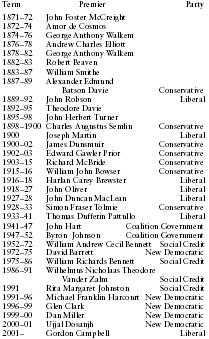
| Term | Premier | Party | |
| 1871–72 | John Foster McCreight | ||
| 1872–74 | Amor de Cosmos | ||
| 1874–76 | George Anthony Walkem | ||
| 1876–78 | Andrew Charles Elliott | ||
| 1878–82 | George Anthony Walkem | ||
| 1882–83 | Robert Beaven | ||
| 1883–87 | William Smithe | ||
| 1887–89 | Alexander Edmund Batson Davie | Conservative | |
| 1889–92 | John Robson | Liberal | |
| 1892–95 | Theodore Davie | ||
| 1895–98 | John Herbert Turner | ||
| 1898–1900 | Charles Augustus Semlin | Conservative | |
| 1900 | Joseph Martin | Liberal | |
| 1900–02 | James Dunsmuir | Conservative | |
| 1902–03 | Edward Gawler Prior | Conservative | |
| 1903–15 | Richard McBride | Conservative | |
| 1915–16 | William John Bowser | Conservative | |
| 1916–18 | Harlan Carey Brewster | Liberal | |
| 1918–27 | John Oliver | Liberal | |
| 1927–28 | John Duncan MacLean | Liberal | |
| 1928–33 | Simon Fraser Tolmie | Conservative | |
| 1933–41 | Thomas Dufferin Pattullo | Liberal | |
| 1941–47 | John Hart | Coalition Government | |
| 1947–52 | Byron Johnson | Coalition Government | |
| 1952–72 | William Andrew Cecil Bennett | Social Credit | |
| 1972–75 | David Barrett | New Democratic | |
| 1975–86 | William Richards Bennett | Social Credit | |
| 1986–91 | Wilhelmus Nicholaas Theodore Vander Zalm | Social Credit | |
| 1991 | Rita Margaret Johnston | Social Credit | |
| 1991–96 | Michael Franklin Harcourt | New Democratic | |
| 1996–99 | Glen Clark | New Democratic | |
| 1999–00 | Dan Miller | New Democratic | |
| 2000–01 | Ujjal Dosanjh | New Democratic | |
| 2001– | Gordon Campbell | Liberal |
14 LOCAL GOVERNMENT
There are several types of local or municipal government (depending on the needs of the community), ranging from improvement districts, which provide single services such as fire protection or garbage collection, to villages, towns, cities, and district municipalities. As of July 2000, British Columbia had 44 cities, 15 towns, 40 villages, 53 districts, 1 Indian government district, and 1 island municipality. Revenue for municipal services comes mainly from property taxation and grants from the provincial government, with some additional revenue from license fees, business taxes, and public utility projects.
15 JUDICIAL SYSTEM
The Canadian Constitution grants provincial jurisdiction over the administration of justice, and allows each province to organize its own court system and police forces. The federal government has exclusive domain over cases involving trade and commerce, banking, bankruptcy, and criminal law. The Federal Court of Canada has both trial and appellate divisions for federal cases. The nine-judge Supreme Court of Canada is an appellate court that determines the constitutionality of both federal and provincial statutes. The Tax Court of Canada hears appeals of taxpayers against assessments by Revenue Canada.
The provincial judiciary in British Columbia is composed of the Court of Appeal, the British Columbia Supreme Court, and a Provincial Court which hears criminal, family, child protection, small claims, and traffic cases. The British Columbia Supreme Court is the superior trial court for the province, and hears both civil and criminal cases, as well as some appeals from the Provincial Court. The Court of Appeal is the highest court in the province and hears appeals from the British Columbia Supreme Court, and some criminal appeals from the Provincial Court.
In 2002, there were 126 homicides in the province. That same year, there were 1,199 crimes of violence per 100,000 persons, and 6,488 property crimes per 100,000 persons.
16 MIGRATION
In 2001, 14 percent of the 1,009,820 immigrants living in British Columbia had come from the United Kingdom; 27.3 percent came from East Asia (including China and Taiwan); 10 percent came from Northern and Western European countries other than the United Kingdom; and 10 percent came from Southern Asia (including India). About 70 percent of the province's immigrant population lives in Vancouver. An increase of well-to-do immigrants from Hong Kong in recent years was associated with the transfer of Hong Kong from British to Chinese control in 1997.
In 2001, 5.3 percent of British Columbia's residents age 5 and older were living abroad. Some 13.5 percent were living elsewhere in British Columbia, while 4.1 percent were living in another province. British Columbia is the fastest-growing province in terms of migration between the provinces. Most new residents who come from other parts of Canada are from Alberta and Ontario.
17 ECONOMY
Agriculture and fishing, especially salmon fishing, are two key sectors of the economy of British Columbia. Other important areas of the economy include: forestry and logging, mining, manufacturing, construction, utilities, transportation and storage, communications, services to business, education, health, accommodation and food, public administration and defense, and finance, insurance, and real estate. In 2002, the gross domestic product totaled C $135.6 billion, or about 11.7 percent of the national total.
18 INCOME
Average family income in the province was C $67,610 in 2000 for a family of five. Average weekly earnings for all sectors in 2000 amounted to C $636.36.
19 INDUSTRY
Manufacturing in British Columbia is still largely resource-based, but is being gradually diversified by high-tech and computer-based industries related to telecommunications and the aerospace and subsea industries. British Columbia has the most balanced export market of all of Canada's provinces, with the United States, Japan, the European Union, and the Pacific Rim countries as its customers. In 2002, the value of manufactured shipments was over C $34.2 billion. The leading contributors were: wood products, C $10.8 billion; paper and allied products, C $4.8 billion; food products, C $4.3 billion; fabricated metal products, C $1.6 billion; machinery manufacturing, C $1.6 billion; non-metallic mineral products C $1.4 billion; transportation equipment, C $1.3 billion; and chemicals, C $1.1 billion.
20 LABOR
The British Columbian labor force in 2003 came to 2.2 million, with an overall participation rate of 65.2 percent. Employment that year amounted to 2.04 million, with 163,600 unemployed, for an unemployment rate of 7.4 percent. The hourly minimum wage as of January 2004 was C $8.00, the third-highest rate among the provinces, behind Nunavut and the Northwest Territories.
The sectors with the largest numbers of employed persons in 2003 were: trade, 332,900; health care and social services, 212,600; manufacturing, 202,000; accommodation and food services, 170,600; professional, scientific, and technical services, 149,400; educational services, 143,100; finance, insurance, and real estate and leasing, 132,800; construction, 121,700; transportation and warehousing, 114,600; information, culture, and recreation, 105,600; public administration, 99,700; other services, 98,100; management, administrative, and other support, 85,000; forestry, fishing, mining, and oil and gas, 44,600; agriculture, 32,700; and utilities, 13,500.
21 AGRICULTURE
Only 4.2 percent of British Columbia's land area can be used to grow crops. In 2001, the province had 20,290 farms on a total of over 6.4 million acres (2.6 million hectares). The most valuable commodities grown are floricultural and nursery items (including potted plants, cut flowers, bedding plants, and foliage plants), followed by vegetables (especially sweet corn, green or wax beans, and green peas), berries (strawberries, cranberries, and raspberries), grapes, tree fruit, and grains and oil-seeds.
The Mainland-Southwest region is the most agriculturally active, followed by the Thompson-Okanagan region and Vancouver Island. The valleys of the southern interior, principally the Okanagan Valley, are famous for cultivation of tree fruits and grapes and for their wine industry. The cooler, wetter climate of the Lower Fraser Valley produces rich crops of berries and vegetables, while the Peace River region accounts for 85 percent of the province's grain production. Alfalfa, barley, oats, forage seed, and other hay and fodder crops are the most important field crops. In 2000, farm cash receipts were estimated at C $2.3 billion (excluding forest products sold), but operating expenses were C $2.1 billion. The average farm operator was left with C $10,954 before interest payments and taxes.
Greenhouses under glass, plastic, or other protection in British Columbia cover 1,147 acres (464 hectares) and produce cucumbers, lettuce, tomatoes, and peppers. The province also produces the greatest amount of fresh mushrooms in western North America, annually marketing some 33 million pounds (15 million kilograms). There were 56 acres (23 hectares) devoted to mushroom cultivation in 2001. The largest ginseng farm in the world is in British Columbia, covering more than 1,458 acres (590 hectares). Some 320 farms in 2001 were growing organic products.
22 DOMESTICATED ANIMALS
The Fraser Valley accounts for most dairy, poultry, and hog farming. The central interior of British Columbia is the primary site of the cattle industry. As of January 2004, the livestock population included 740,000 head of cattle, 170,000 hogs, and 61,000 sheep. The province's dairy cows are among Canada's most productive, with an annual milk production of 135 million gallons (510 million liters). Egg production in 2000 was valued at C $73 million. In 2003, cash receipts for livestock amounted to C $1.19 billion, a 6 percent increase over 2002. Meat and poultry processing annually generate about C $850 million in British Columbia. More than 135 farms throughout the province raise reindeer, fallow deer, and plains bison for specialty markets.
23 FISHING
Over 80 species of finfish and shellfish are harvested and marketed by the province's fishing and related industries, which are largely based on Vancouver Island. British Columbia has some 16,000 commercial anglers, operating from about 6,000 fishing boats. Salmon is generally the most important species, followed by roe herring, groundfish varieties, and shellfish. In addition, the province also has over 500 fish farms. British Columbia's fish exports in 2003 were valued at C $996.2 million, third behind Nova Scotia and Newfoundland and Labrador.
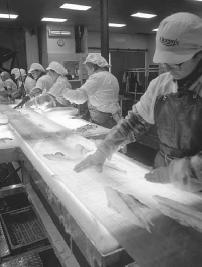
Sport fishing is also popular. As of 2000, there were 145,495 residents actively engaged in tidal water fishing, and 235,691 residents actively engaged in freshwater fishing.
24 FORESTRY
The British Columbian economy is based on the province's great natural resources, primarily its vast forests, which cover 65 percent of its total land area. The provincial government owns about 95 percent of the forest land in British Columbia. Available productive forest land covers 112 million acres (45.3 million hectares) or 47 percent of the province, with about 96 percent of that area covered with conifers. The principal species harvested are lodge-pole pine, spruce, hemlock, balsam, Douglas fir, and cedar. Coastal forests consist primarily of hemlock, while lodgepole pine and spruce are the main interior species. Conifers are converted into lumber, newsprint, pulp and paper products, shingles and shakes, poles, and piling—about half the total softwood inventory of Canada.
In 2001, the timber harvest was 73.6 million cubic meters. In 2002, British Columbia exported C $13.9 billion in forestry products, mainly softwood lumber (46 percent) and wood pulp (19 percent). The softwood timber harvest annually accounts for about six percent of the world total (and about 53 percent of the Canadian total). British Columbia's exports of softwood lumber account for about 35 percent of the world export total. About ten percent of all employment in British Columbia is in the forestry industry—as of 2002, forestry directly employed some 87,300 people.
By law, all public lands that are harvested must be reforested. Since 1930, the British Columbia Forestry Service has planted over three billion seedlings. Each year more than 200 million seedlings from 19 species are planted to replace trees that have been harvested, destroyed by fire, or damaged by pests. The seedlings have a survival rate of about 87 percent.
25 MINING
Mining in British Columbia dates back to the mid-1800s, when coal was mined on Vancouver Island, and has expanded to now include base and precious metals. The abundance of minerals and easy access to markets has made mining an important economic sector. Copper, gold, and zinc are the leading metals extracted; sulfur and asbestos are the leading industrial minerals. At the beginning of 1997, British Columbia claimed all of Canada's proven reserves of molybdenum, 39 percent of its copper reserves, and more than one quarter of the silver. The value of British Columbia's metal production in 2003 was C $1.28 billion. Total copper production in 2003 was valued at C $588.8 million. About 35 percent of the copper mined in Canada comes from British Columbia, mainly from the south-central part of the province and northern Vancouver Island.
In 2003, British Columbia's total mineral production (excluding fuels) was $1.86 billion. Of that total, C $578 million came from non-metallic minerals.
26 ENERGY AND POWER
The most valuable mineral resources in British Columbia are coal, petroleum, and natural gas. Improved prices for natural gas and increased demand from the US market have caused fuel mineral activity to surge. As of 1 January 2002, known reserves of crude oil were 155 million barrels; natural gas, 8.9 trillion cubic feet (0.25 trillion cubic meters).
British Columbia's abundant fresh water supply has led to the extensive
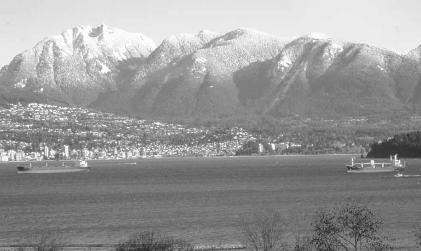
27 COMMERCE
In 2002, total exports amounted to C $59.3 billion and imports totaled C $67.1 billion. That year, C $39.8 billion in exports went to other countries, and C $19.5 billion went to other provinces. Also in 2002, C $37.8 billion in imports came from other countries, and C $29.3 billion came from other provinces.
The metropolitan Vancouver area is the primary commercial area in British Columbia, accounting for over 50 percent of total provincial sales. Other large markets exist in metropolitan Victoria, Kelowna, and Kamloops.
28 PUBLIC FINANCE
The fiscal year extends from 1 April to 31 March. For fiscal year 2001/02, total revenues were C $23.13 billion; expenditures were C $25.26 billion. Major expenditure areas were health, education, social services, natural resources and economic development, transportation, protection of persons and property, and interest on debt. The total provincial debt as of 31 March 2003 was C $36.56 billion.
29 TAXATION
The basic personal income tax rate in 2003 was 48.9 percent, the highest provincial personal income tax rate in Canada. The retail sales tax was 7.5 percent. Major consumption taxes in 2003 included gasoline ( C $0.145 per liter) and tobacco ( C $32 per carton).
The average family of four (two parents and two children) in 2003 earned C $81,915. Such a family paid C $39,602 in taxes.
Corporate income tax rates in 2003 were as follows: small business rate, 4.5 percent; general business rate, 13.5 percent; and capital tax rate for financial institutions, 3 percent.
30 HEALTH
In 2001, there were 40,575 live births in British Columbia, a decrease of 0.2 percent from 2000. There were 28,353 deaths that year. British Columbia was one of only four provinces or territories to have an increase in the number of deaths in 2001. Life expectancy for men in 2001 was 78.1 years, and 83.1 years for women. Reported cases of selected diseases in 2002 included giardiasis, 705; campylobacteriosis, 2,042; hepatitis B, 75; gonococcal infections, 645; and salmonellosis, 752. Between November 1985 and June 2003, 10,948 residents had become infected with HIV, the virus that causes AIDS. Vancouver has one of the highest rates of new HIV infections in North America.
31 HOUSING
There were 1.53 million households in 2001, with an average size of 2.5 persons. The most common housing was a single family detached home. In 2001, 841,540 households were living in single-detached houses, 101,570 were living in apartments in buildings with five or more stories, 43,910 were living in mobile homes, and 547,315 were living in other dwellings, including row houses and apartments in buildings with fewer than five stories. In 2002, C $6.6 billion was invested in residential construction.
32 EDUCATION
In 2000, there were approximately 677,000 pupils enrolled in elementary and secondary schools in British Columbia. The Ministry of Education provides overall management of the school system by setting a framework to ensure basic equality in school programs across the province. Direct administration is provided by locally elected school boards of trustees in 59 school districts and one Francophone Education Authority.
British Columbia has 27 colleges and universities. Among the largest are: the University of British Columbia in Vancouver, with a 2003 total enrollment of approximately 53,000; Simon Fraser University in Burnaby, with 25,000 students; the British Columbia Institute of Technology in the Vancouver area; the University of Victoria; Royal Roads University in Victoria, with 2,300 students; the University
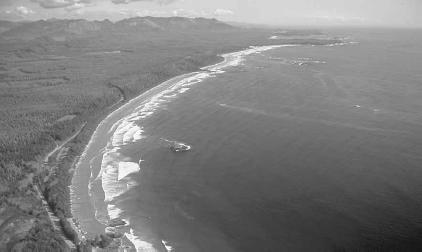
British Columbia also has an extensive non-university, postsecondary education system providing academic, technical, vocational, career, and adult basic education programs. These programs are administered from community colleges, five institutes, and the Open Learning Agency.
33 ARTS
Vancouver is the center for cultural arts in British Columbia. The province is also a prominent filming location for movies and some 20 television series. Per capita provincial spending on the arts and culture was C $75 in 2000/01. In 2002, there were 18 dance companies or societies, 10 literary associations, 50 music organizations, 61 theater companies and groups, and 41 visual arts associations and galleries as members of the British Columbia Alliance for Arts and Culture.
34 LIBRARIES AND MUSEUMS
British Columbia has dozens of municipal public library systems, the largest of which is Vancouver Public Library with 22 branches. The most prominent academic library system is the University of British Columbia Libraries in Vancouver. Vancouver has the University of British Columbia's Museum of Anthropology (which includes totem poles and many ceremonial objects of Northwest Native art), the Vancouver Museum, the Maritime Museum of British Columbia, and the Vancouver Art Gallery. The Royal British Columbia Museum in Victoria, founded in 1886, focuses on the natural and human history of the province. The Canadian Museum of Flight, established by volunteer aviation enthusiasts in 1977, moved to its current location at Langley Airport in 1996.
35 COMMUNICATIONS
Telephone service in British Columbia uses an estimated two million service lines and serves over 98 percent of the province's homes. In 2004, Vancouver had 27 FM radio stations, 11 AM radio stations, 1 shortwave radio station, and 15 Internet radio stations. Vancouver had 7 television stations in 2004. Cable service is provided to about 90 percent of all homes.
36 PRESS
Major metropolitan newspapers include the Vancouver Province , the Vancouver Sun , the Victoria News , and the Times-Colonist (Victoria). The Sing Tao Chinese Daily and the World Journal are Chinese-language daily papers published in greater Vancouver. Other Vancouver periodicals feature editions in Punjabi, French, and several other languages.
37 TOURISM, TRAVEL, AND RECREATION
Tourism is an important economic sector. During 2002, C $9.3 billion was spent by 22.6 million overnight visitors traveling in the province. With over 27.9 million acres (11.3 million hectares) of parkland, ecological reserves, and recreation areas, the Rocky Mountains remain the biggest attraction. British Columbians make about 45 million recreational visits to provincial forests per year, annually spending about C $2.4 billion in recreational activities in those areas.
Also very popular is coastal British Columbia, with its beaches, hiking trails, artist colonies, wildlife reserves, whale-sighting locales, and other attractions.
Of increasing attraction to visitors are the Queen Charlotte Islands, large parts of which have recently been set aside as parkland. The area contains untouched wilderness and unique plant species. The abandoned Haida village of Ninstints on Anthony Island in the Queen Charlotte Islands is of such historical and cultural importance that it has been designated a world heritage site by the United Nations Educational, Scientific, and Cultural Organization (UNESCO).
38 SPORTS
Vancouver is the home of the Canucks of the National Hockey League (NHL). The B.C. Lions of the Canadian Football League also play in Vancouver and won the Grey Cup in 1964, 1985, 1994, and 2000. The Vancouver Griffins play in the
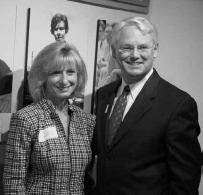
39 FAMOUS BRITISH COLUMBIANS
Sir James Douglas (b.Guyana, 1803–77), considered the "Father of British Columbia," founded Fort Victoria in 1843 and became Vancouver Island's first colonial governor. Kim Campbell (b.1947), who was Canada's first female prime minister, is from British Columbia.
Famous actors have included John Ireland (1914–92), Raymond Burr (1917–93), James Doohan (b.1920), Alexis Smith (1921–93), Yvonne De Carlo (b.1924), Barbara Parkins (b.1942), and Pamela Anderson (b.1967). Musicians David Foster and Bryan Adams (b.1959) are also prominent entertainers.
Prominent British Columbian authors include poet and fiction writer George Bowering (b.1935), who was named Poet Laureate of Canada in 2002. Novelists Sheila Watson (1909–98), Jack Hodgins (b.1938), and Brian Fawcett (b.1944). The scientist, educator, and author David Suzuki (b.1936) was born in Vancouver.
Hockey stars include Juha Widing (1948–85) and Brian Spencer (1949–88).
40 BIBLIOGRAPHY
Bowers, Vivien. British Columbia . Minneapolis: Lerner Publications, 1995.
LeVert, Suzanne. British Columbia. Philadelphia: Chelsea House, 2000.
Nanton, Isabel. Discover Canada: British Columbia . Toronto: Grolier, 1994.
Palana, Brett J. British Columbia. San Diego: Lucent Books, 2003.
Sorensen, Lynda. Canada: Provinces and Territories . Vero Beach, FL: Rourke Book Co., 1995.
Web sites
"British Columbia." Canada Tourism Commission. http://www.travelcanada.ca/tc_redesign/app/en/ca/destinations.do?provinceId=3 (accessed on March 19, 2004).
British Columbia: BCStats. http://www.bcstats.gov.bc.ca/ (accessed on March 19, 2004).
The Government of British Columbia. http://www.gov.bc.ca/bvprd/bc/home.do (accessed on March 19, 2004).
Statistics Canada. http://www.statcan.ca/english (accessed on March 19, 2004).
dec.9,2009
I am in Grade 8, Ontario. And, on my behalf, I wish you a wonderful and a happy Christmas and New Years
The text above says: "Vancouver has the University of British Columbia's Museum of Anthropology (which includes totem poles and many ceremonial objects of Northwest Native art), the Vancouver Museum, the Maritime Museum of British Columbia, and the Vancouver Art Gallery."
The Maritime Museum of BC is in Victoria, starting in 1954 as a naval museum in Esquimalt, B.C., and since 1965 occupying the old Law Courts building at 28 Bastion Square. More information, and confirmation, is available at the MMBC's website..
Thank you Sylvia
signed,a sixth grader
thanks
The Guardian